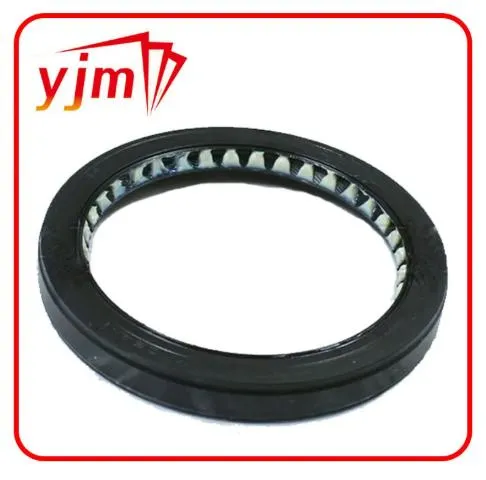A Complete Guide to Front Engine Oil Seals and Their Role in Engine Health
The front oil seal is a small yet vital component that helps maintain oil pressure and engine cleanliness. Commonly known by several names—such as front crank shaft seal, front main engine seal, or front crankcase seal—this part is essential for preventing oil leaks where the crankshaft exits the engine at the front. In this article, we’ll explore the purpose, types, signs of failure, and replacement considerations for the front engine oil seal and its variants.

What Is the Front Oil Seal and Where Is It Located?
The front oil seal, also referred to as the front crank shaft seal or front main oil seal, is positioned at the front of the engine where the crankshaft exits the engine block. It seals the rotating crankshaft and prevents engine oil from escaping.
Types and Terminology
Depending on the make and model of the engine, this seal may be referred to as:
Front crank shaft seal
Front crankcase seal
Front engine oil seal
Front main engine seal
Front main oil seal
Front seal engine
Despite the different terms, these all describe the same essential component.
Aiki
Prevents oil leakage from the crankcase
Maintains internal oil pressure
Keeps external contaminants (dust, dirt) from entering the engine
Protects timing belt or serpentine belt from oil contamination
The seal is often mounted behind the crankshaft pulley or harmonic balancer, which means it’s exposed to constant rotation, engine heat, and pressure fluctuations.
Symptoms of a Failing Front Seal
A leaking front engine oil seal may start as a minor inconvenience but can quickly lead to more severe engine issues if ignored. Recognizing early warning signs is key to preventing costly repairs.
Common Symptoms
Visible oil leak at the front of the engine
Oil on the crankshaft pulley or accessory belt
Low oil level over time with no external damage
Burning oil smell from oil dripping onto hot engine parts
Unusual noises from oil-contaminated belts slipping
Any of these indicators suggest the front main oil seal may be worn, hardened, cracked, or damaged. Ignoring it can lead to reduced lubrication, engine overheating, or timing system issues.
Causes of Seal Failure
Aging rubber material due to heat and pressure
Excess crankcase pressure caused by a clogged PCV valve
Misaligned crankshaft pulley or worn crankshaft surface
Improper installation or use of low-quality parts
Replacement, Costs, and Maintenance Tips
Replacing the front main engine seal is typically less complicated than rear seals, but still requires specific tools and knowledge.
What’s Involved in Replacement
Removal of the serpentine belt or timing belt/chain
Removal of the crankshaft pulley or harmonic balancer
Extracting the old seal with a puller or pry tool
Pressing or tapping in a new front seal engine component
Reassembling and ensuring all surfaces are clean and aligned
Many professional mechanics suggest replacing the front crankcase seal during timing belt or chain replacement to save on labor costs.
Cost Estimate
Seal part only: $10–$30 depending on the brand and vehicle
Labor: $100–$300 depending on engine layout and labor rates
Total replacement cost: Approximately $150–$350
Prices vary significantly depending on your car’s make and model. Luxury and performance engines often require more labor-intensive procedures.
Maintenance Tips
Regularly check engine oil level and quality
Replace PCV valve at recommended intervals to reduce pressure build-up
Inspect belt area for signs of oil contamination
Use OEM or high-quality seals to ensure long-lasting performance
Preventive maintenance goes a long way in avoiding oil seal failure and its related engine complications.
Whether you call it a front crank shaft seal, front main oil seal, or front crankcase seal, this small part performs a huge task in maintaining engine health. Understanding its function, failure signs, and when to replace it helps avoid serious mechanical issues and costly repairs. Staying proactive with inspections and timely replacements ensures your engine remains sealed, clean, and well-lubricated.
-
Simplifying Oil Changes: A Comprehensive Guide to Oil Drain Plugs and Their Variants
Labarai Aug.04,2025
-
Mastering Oil Drain Maintenance: Solutions for Stripped, Worn, and Upgraded Oil Plugs
Labarai Aug.04,2025
-
Fixing Oil Pan Plug Issues: Leaks, Stripped Nuts, and the Right Replacement Solutions
Labarai Aug.04,2025
-
Everything You Need to Know About Oil Drain Plugs: Sizes, Fixes, and Upgrades
Labarai Aug.04,2025
-
Choosing the Right Oil Drain Plug: A Guide to Sizes, Materials, and Drain Innovations
Labarai Aug.04,2025
-
A Complete Guide to Automotive Drain Plugs: Types, Problems, and Innovative Solutions
Labarai Aug.04,2025
-
The Ultimate Guide to Car Repair Kits: Tools and Essentials Every Driver Should Own
Labarai Aug.01,2025
Rukunin samfuran















